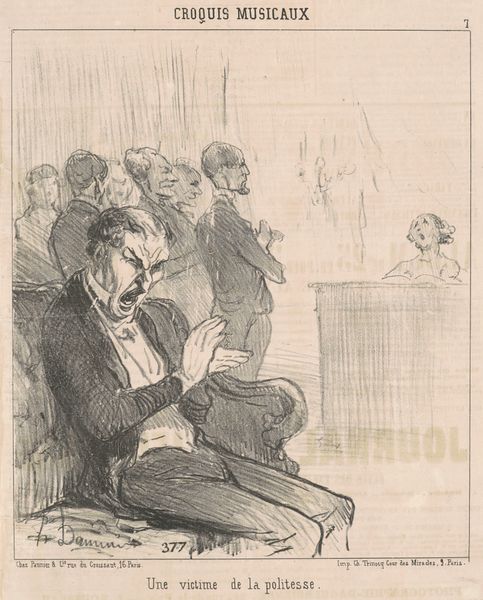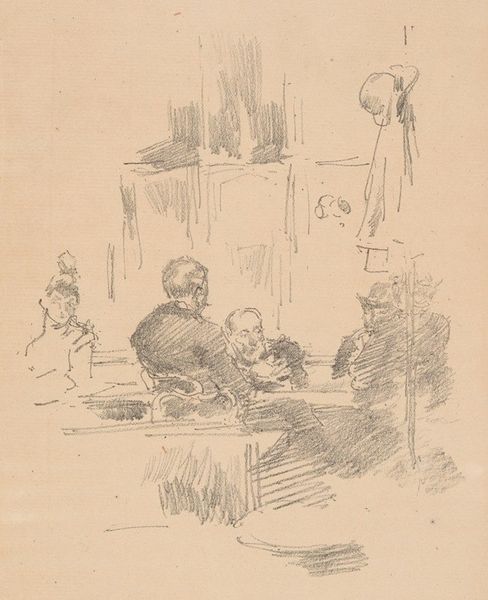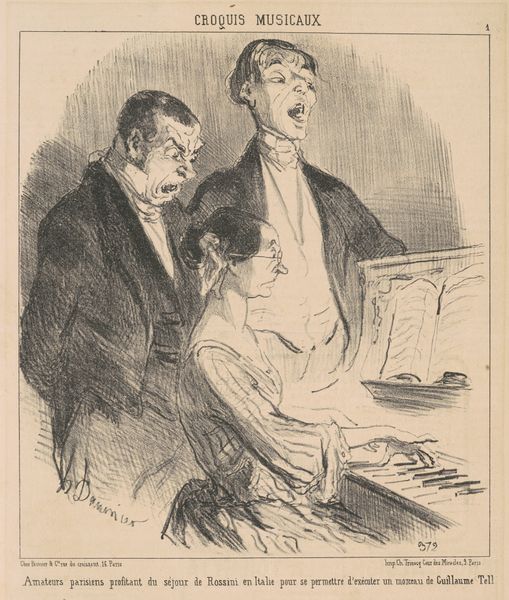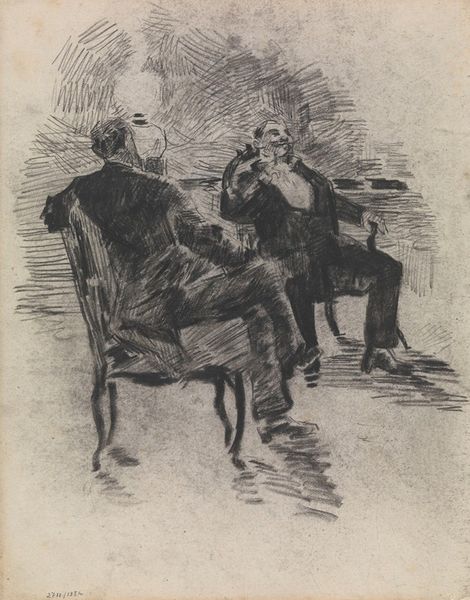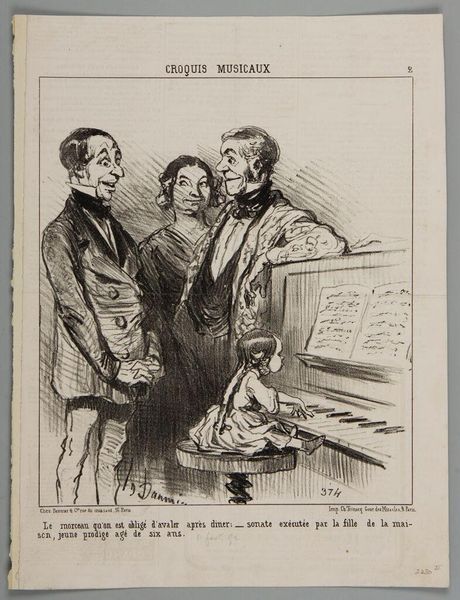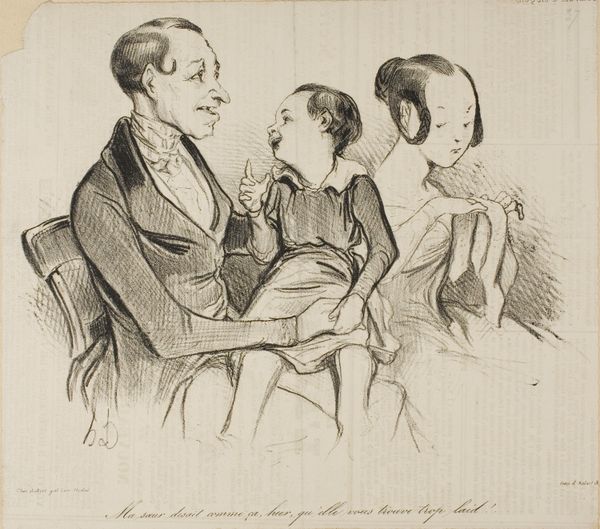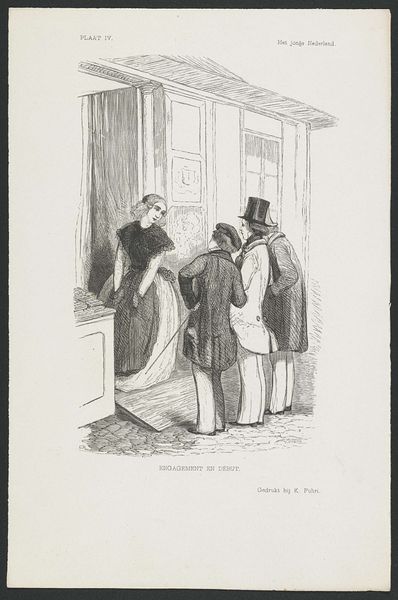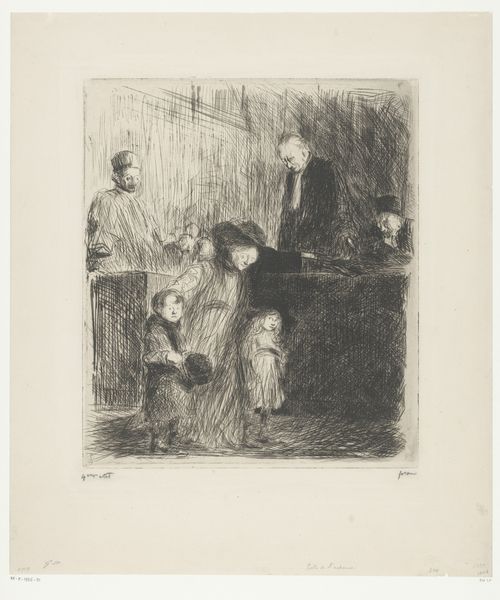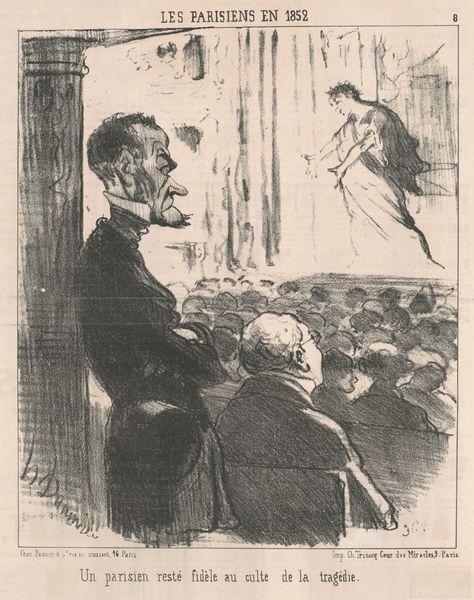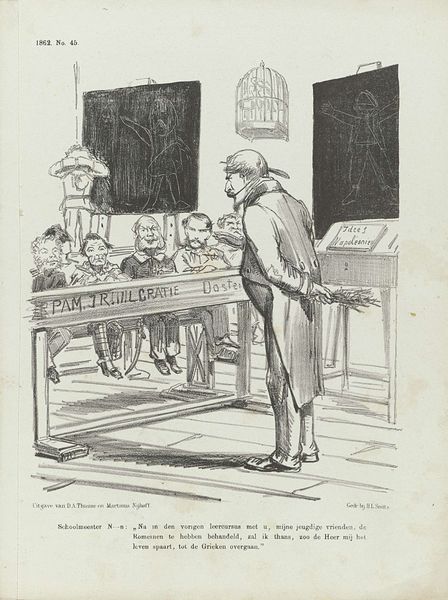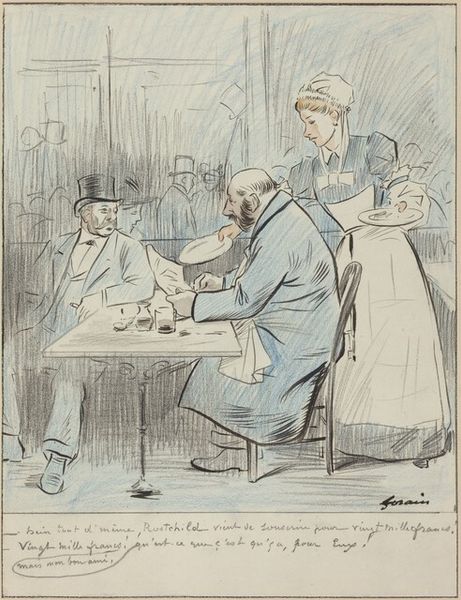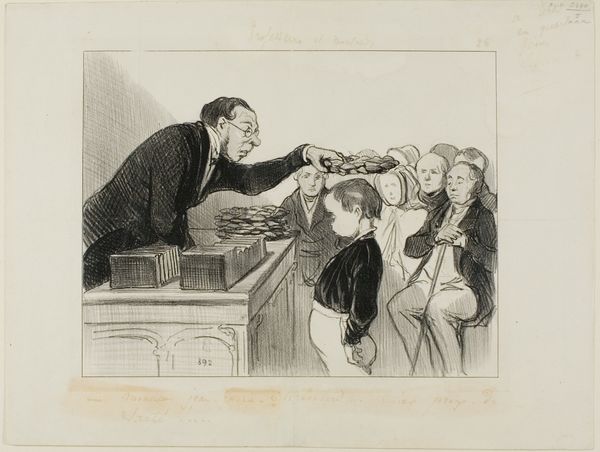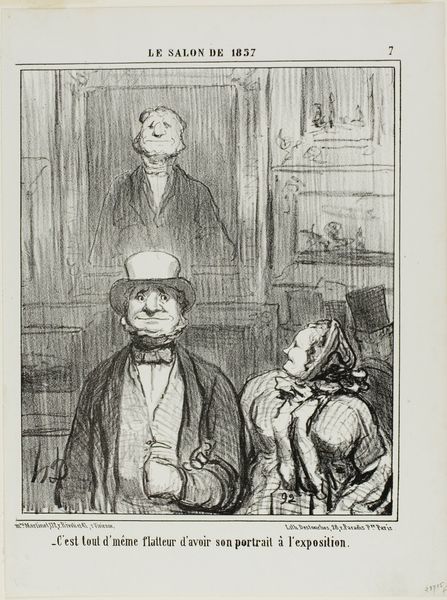
A Victim of His Own Politeness, plate 7 from Croquis Musicaux 1852
0:00
0:00
Dimensions: 251 × 216 mm (image); 260 × 338 mm (sheet)
Copyright: Public Domain
Curator: Alright, let's turn our attention to a work by Honoré Daumier. This lithograph, tinted with color, is titled "A Victim of His Own Politeness," and it comes from his series “Croquis Musicaux” published in 1852. Editor: My initial impression is one of theatricality and irony. The dramatic figure in the foreground—is he applauding or in agony? There’s a tension created by the extreme expression on his face, which almost seems to clash with the formal setting. Curator: That's precisely the genius of Daumier. He was a master of social commentary, using caricature to critique the bourgeoisie. Notice the rows of faces behind our "victim," each subtly conveying a different form of polite boredom or disinterest. Daumier highlights the hypocrisy of forced enthusiasm in social settings. Editor: I’m struck by Daumier's use of line. Look at the loose, sketchy quality, particularly in the background figures. The swift, almost frenetic marks add to the sense of unease and repressed energy within the scene. The coloring too, thinly applied, intensifies the overall mood. Curator: Absolutely. Daumier created these lithographs for mass circulation, primarily through newspapers and journals. The immediacy of the lithographic technique allowed him to respond quickly to social events and trends. "A Victim of His Own Politeness" speaks to the larger anxieties around social performance in 19th-century France. Editor: The composition cleverly draws the eye from that flamboyant figure in the chair, back through the muted audience, right to the performer herself—rendered with the lightest touch, almost an afterthought. Is that deliberate undermining, a formal declaration about performance being secondary to societal appearances? Curator: I think so, it certainly aligns with Daumier's broader project of exposing the superficiality of bourgeois life. The "victim" isn't reacting to the music; he’s performing for his peers. His politeness, feigned or not, becomes a kind of prison. Editor: Thinking about line, shape, and compositional balance brings me back to the power of simplicity, using seemingly rushed strokes to highlight Daumier's statement of 19th century societal expectations. It also proves that simple art, when done thoughtfully, can deliver strong emotional cues and commentary. Curator: It's a potent reminder that art often functions as a mirror, reflecting the values and contradictions of its time. It gives pause to reflect on these same behaviors, perhaps still very alive in present day.
Comments
No comments
Be the first to comment and join the conversation on the ultimate creative platform.
